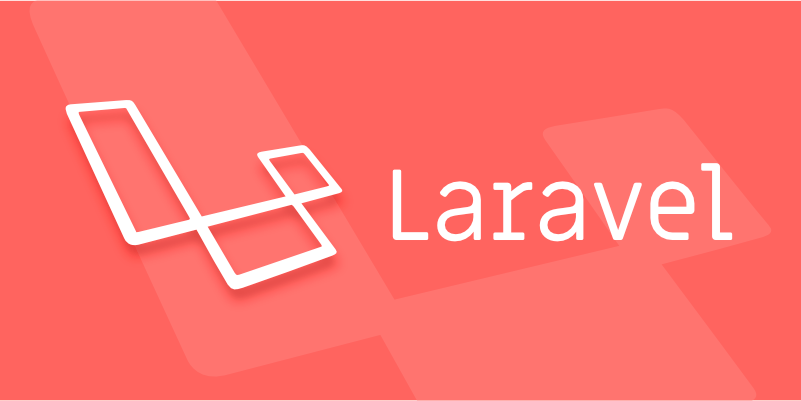Use Laravel database fill to accelerate development requires four steps: first, define dynamic data generation rules through the factory, then organize the fill class according to the functional module, and then customize the Faker again to obtain data that is closer to the actual situation, and finally run the fill command efficiently. For example, create a UserFactory to define the user data structure and generate test data by calling the factory method; separate UsersTableSeeder, PostsTableSeeder, etc. by modules and call them uniformly by DatabaseSeeder; use fake()->randomElement or custom premium() methods in the factory to enhance data authenticity; use the php artisan migrate:fresh --seed or db:seed commands to flexibly reset or update data, thereby improving testing efficiency and reducing manual input.

When you're working on a Laravel project, setting up database seeing for development is one of the best things you can do to speed up testing and avoid manual data entry. It gives you consistent, realistic data to work with—without having to click through forms every time you reset your database.

Here's how to set it up in a way that actually works for real-world projects.

Use Factory for Dynamic Data Generation
Factoryes are the backbone of Laravel's seeing system. Instead of hardcoding values into seed files, factories let you define reusable blueprints for your models.
For example, if you have a User model, you'd create a factory like this:

// database/factories/UserFactory.php
use Illuminate\Database\Eloquent\Factory\Factory;
class UserFactory extends Factory
{
public function definition()
{
Return [
'name' => fake()->name(),
'email' => fake()->unique()->safeEmail(),
'password' => bcrypt('password'),
];
}
}Now, whenever you need test users, you can generate them with traits or states to customize behavior:
- Create 10 regular users:
\App\Models\User::factory(10)->create();
- Create one admin user:
\App\Models\User::factory()->create(['is_admin' => true]);
This makes it easy to simulate different scenarios without writing repetitive seed classes.
Organize Seeders by Feature or Module
Don't just throw everything into DatabaseSeeder . If your app has multiple modules (like users, posts, comments), create separate seeder files for each.
For example:
database/seeders/UsersTableSeeder.php database/seeders/PostsTableSeeder.php database/seeders/CommentsTableSeeder.php
Then call them from the main DatabaseSeeder class:
public function run()
{
$this->call([
UsersTableSeeder::class,
PostsTableSeeder::class,
CommentsTableSeeder::class,
]);
}This keeps your seeing logic modular and easier to debug or disable when needed.
Also, don't forget to use artisan make:seeder to generate these files—it saves time and avoids typos.
Don't Skip Faker Customization
Faker comes with tons of built-in data types, but sometimes you need more control. For example, if you're generating product names, you might want something semi-realistic instead of random words.
You can tweak faker calls directly in your factories:
'product_name' => fake()->randomElement(['Premium Widget', 'Deluxe Gadget', 'Pro Model']), 'price' => fake()->numberBetween(10, 500),
Or even better, create helper methods in your factories for complex logic:
public function premium()
{
return $this->state(fn (array $attributes) => [
'type' => 'premium',
'price' => 99.99,
]);
}This lets you write cleaner factory calls like:
Product::factory()->premium()->create();
Run Seeding Efficiently During Development
To refresh your database and re-seed, use:
php artisan migrate:fresh --seed
That command drops all tables, reruns migrations, and then runs your seeders. Perfect when you're still designing your schema.
If you only need to re-run the seeders without resetting the database structure:
php artisan db:seed
But be careful—this won't clear existing data. So if you're adding new seeders, consider truncating relevant tables first using the --class option:
php artisan db:seed --class=UsersTableSeeder
This will re-run just the specified seeder, which is handy when iterating quickly.
Setting up database seeing properly takes a bit of time upfront, but it pays off every time you reset your dev DB or onboard a new team member. Keep your factories clean, organize your seeders, and take advantage of faker customization—it'll save you hours down the line.
Basically that's it.
The above is the detailed content of Setting up Database Seeding for Development in Laravel?. For more information, please follow other related articles on the PHP Chinese website!

Hot AI Tools

Undress AI Tool
Undress images for free

Undresser.AI Undress
AI-powered app for creating realistic nude photos

AI Clothes Remover
Online AI tool for removing clothes from photos.

Clothoff.io
AI clothes remover

Video Face Swap
Swap faces in any video effortlessly with our completely free AI face swap tool!

Hot Article

Hot Tools

Notepad++7.3.1
Easy-to-use and free code editor

SublimeText3 Chinese version
Chinese version, very easy to use

Zend Studio 13.0.1
Powerful PHP integrated development environment

Dreamweaver CS6
Visual web development tools

SublimeText3 Mac version
God-level code editing software (SublimeText3)

Hot Topics
 Creating Custom Validation Rules in a Laravel Project
Jul 04, 2025 am 01:03 AM
Creating Custom Validation Rules in a Laravel Project
Jul 04, 2025 am 01:03 AM
There are three ways to add custom validation rules in Laravel: using closures, Rule classes, and form requests. 1. Use closures to be suitable for lightweight verification, such as preventing the user name "admin"; 2. Create Rule classes (such as ValidUsernameRule) to make complex logic clearer and maintainable; 3. Integrate multiple rules in form requests and centrally manage verification logic. At the same time, you can set prompts through custom messages methods or incoming error message arrays to improve flexibility and maintainability.
 Adding multilingual support to a Laravel application
Jul 03, 2025 am 01:17 AM
Adding multilingual support to a Laravel application
Jul 03, 2025 am 01:17 AM
The core methods for Laravel applications to implement multilingual support include: setting language files, dynamic language switching, translation URL routing, and managing translation keys in Blade templates. First, organize the strings of each language in the corresponding folders (such as en, es, fr) in the /resources/lang directory, and define the translation content by returning the associative array; 2. Translate the key value through the \_\_() helper function call, and use App::setLocale() to combine session or routing parameters to realize language switching; 3. For translation URLs, paths can be defined for different languages ??through prefixed routing groups, or route alias in language files dynamically mapped; 4. Keep the translation keys concise and
 Working with pivot tables in Laravel Many-to-Many relationships
Jul 07, 2025 am 01:06 AM
Working with pivot tables in Laravel Many-to-Many relationships
Jul 07, 2025 am 01:06 AM
ToworkeffectivelywithpivottablesinLaravel,firstaccesspivotdatausingwithPivot()orwithTimestamps(),thenupdateentrieswithupdateExistingPivot(),managerelationshipsviadetach()andsync(),andusecustompivotmodelswhenneeded.1.UsewithPivot()toincludespecificcol
 Sending different types of notifications with Laravel
Jul 06, 2025 am 12:52 AM
Sending different types of notifications with Laravel
Jul 06, 2025 am 12:52 AM
Laravelprovidesacleanandflexiblewaytosendnotificationsviamultiplechannelslikeemail,SMS,in-appalerts,andpushnotifications.Youdefinenotificationchannelsinthevia()methodofanotificationclass,andimplementspecificmethodsliketoMail(),toDatabase(),ortoVonage
 Understanding and creating custom Service Providers in Laravel
Jul 03, 2025 am 01:35 AM
Understanding and creating custom Service Providers in Laravel
Jul 03, 2025 am 01:35 AM
ServiceProvider is the core mechanism used in the Laravel framework for registering services and initializing logic. You can create a custom ServiceProvider through the Artisan command; 1. The register method is used to bind services, register singletons, set aliases, etc., and other services that have not yet been loaded cannot be called; 2. The boot method runs after all services are registered and is used to register event listeners, view synthesizers, middleware and other logic that depends on other services; common uses include binding interfaces and implementations, registering Facades, loading configurations, registering command-line instructions and view components; it is recommended to centralize relevant bindings to a ServiceProvider to manage, and pay attention to registration
 Understanding Dependency Injection in Laravel?
Jul 05, 2025 am 02:01 AM
Understanding Dependency Injection in Laravel?
Jul 05, 2025 am 02:01 AM
Dependency injection automatically handles class dependencies through service containers in Laravel without manual new objects. Its core is constructor injection and method injection, such as automatically passing in the Request instance in the controller. Laravel parses dependencies through type prompts and recursively creates the required objects. The binding interface and implementation can be used by the service provider to use the bind method, or singleton to bind a singleton. When using it, you need to ensure type prompts, avoid constructor complications, use context bindings with caution, and understand automatic parsing rules. Mastering these can improve code flexibility and maintenance.
 Strategies for optimizing Laravel application performance
Jul 09, 2025 am 03:00 AM
Strategies for optimizing Laravel application performance
Jul 09, 2025 am 03:00 AM
Laravel performance optimization can improve application efficiency through four core directions. 1. Use the cache mechanism to reduce duplicate queries, store infrequently changing data through Cache::remember() and other methods to reduce database access frequency; 2. Optimize database from the model to query statements, avoid N 1 queries, specifying field queries, adding indexes, paging processing and reading and writing separation, and reduce bottlenecks; 3. Use time-consuming operations such as email sending and file exporting to queue asynchronous processing, use Supervisor to manage workers and set up retry mechanisms; 4. Use middleware and service providers reasonably to avoid complex logic and unnecessary initialization code, and delay loading of services to improve startup efficiency.
 Managing database state for testing in Laravel
Jul 13, 2025 am 03:08 AM
Managing database state for testing in Laravel
Jul 13, 2025 am 03:08 AM
Methods to manage database state in Laravel tests include using RefreshDatabase, selective seeding of data, careful use of transactions, and manual cleaning if necessary. 1. Use RefreshDatabasetrait to automatically migrate the database structure to ensure that each test is based on a clean database; 2. Use specific seeds to fill the necessary data and generate dynamic data in combination with the model factory; 3. Use DatabaseTransactionstrait to roll back the test changes, but pay attention to its limitations; 4. Manually truncate the table or reseed the database when it cannot be automatically cleaned. These methods are flexibly selected according to the type of test and environment to ensure the reliability and efficiency of the test.






